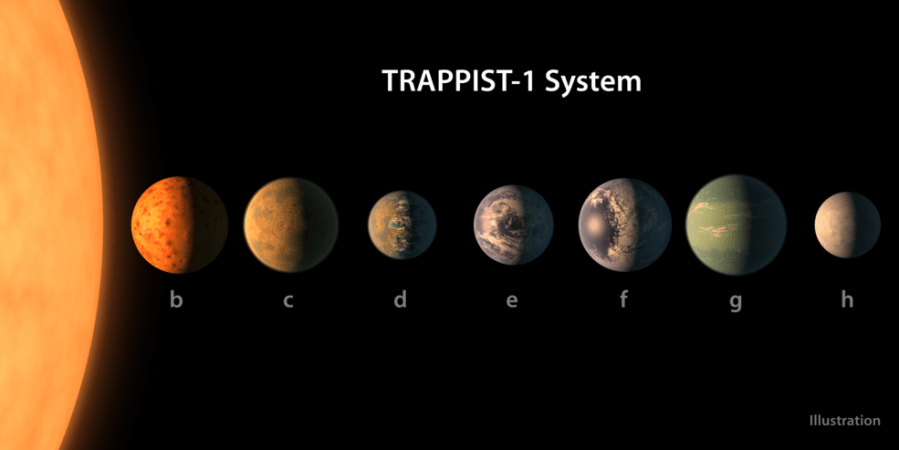
Seven Earth-sized planets, known as exoplanets, have been discovered outside our solar system by NASA's Spitzer Space Telescope.
Also Read: Mars might be developing Saturn-like rings, and here's why
An exoplanet refers to those planets which orbit around a star other than the Sun.
This exoplanet system, dubbed as TRAPPIST-1, has been observed by The Transiting Planets and Planetesimals Small Telescope in Chile, and the news briefing regarding this was made at NASA's Washington headquarters.
This is the first time so many habitable planets have been discovered orbiting an ultra-cool dwarf star. The parent star is dim and is orbited by seven exoplanets, which have the potential to harbour life. Out of these seven planets, three are located in the habitable zone and one of the planets around the parent star is also likely to possess liquid water.
"This discovery could be a significant piece in the puzzle of finding habitable environments, places that are conducive to life," said Thomas Zurbuchen, an associate administrator at the agency's Science Mission Directorate in Washington, according to a NASA statement.
"Answering the question 'are we alone' is a top science priority and finding so many planets like these for the first time in the habitable zone is a remarkable step forward toward that goal," Zurbuchen added.
This alien planetary system is situated around 40 light-years (235 trillion miles) from Earth. The research team was able to measure the precise sizes of these exoplanets with the help of Splitzer's accumulated data. On the basis of the densities of the exoplanets, the collected information reveals that all the exoplanets are rocky.
The mass of the seventh exoplanet, which is situated farthest from the parent star, is still unknown and the researchers guesstimate it to be an icy world.
Further research will aid in finding out if these alien Earth-like planets possess liquid water, and if it is on the surface, as per the NASA statement.
Three planets present in this system were discovered by the researchers with the help of TRAPPIST, way back in May 2016. "Assisted by several ground-based telescopes, including the European Southern Observatory's Very Large Telescope, Spitzer confirmed the existence of two of these planets and discovered five additional ones, increasing the number of known planets in the system to seven," according to NASA's statement.
This finding was made with the help of European Southern Observatory's Very Large Telescope and Spitzer telescope. These telescopes later spotted five more such planets present in the system.
"The seven wonders of TRAPPIST-1 are the first Earth-size planets that have been found orbiting this kind of star," said Michael Gillon, lead author of the paper and the principal investigator of the TRAPPIST exoplanet survey at the University of Liege, Belgium.
"It is also the best target yet for studying the atmospheres of potentially habitable, Earth-size worlds," Gillon added.
Here's the video regarding this latest NASA discovery:








